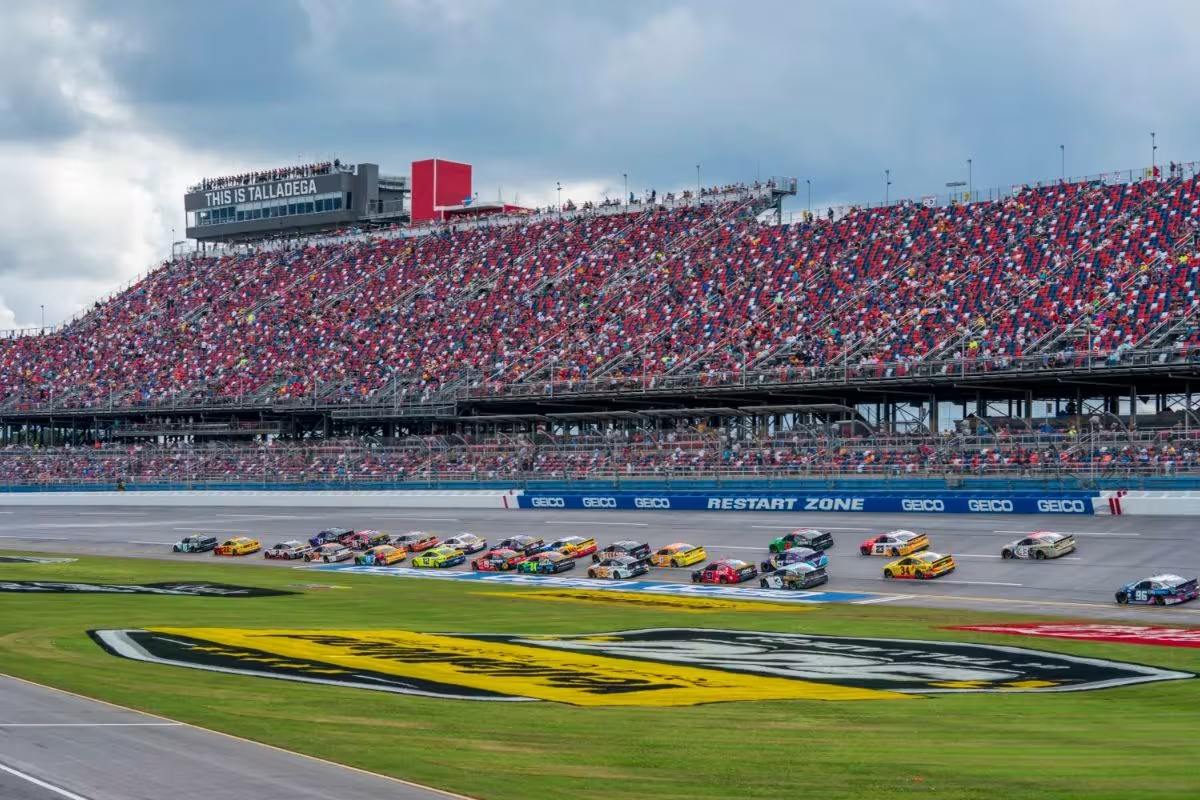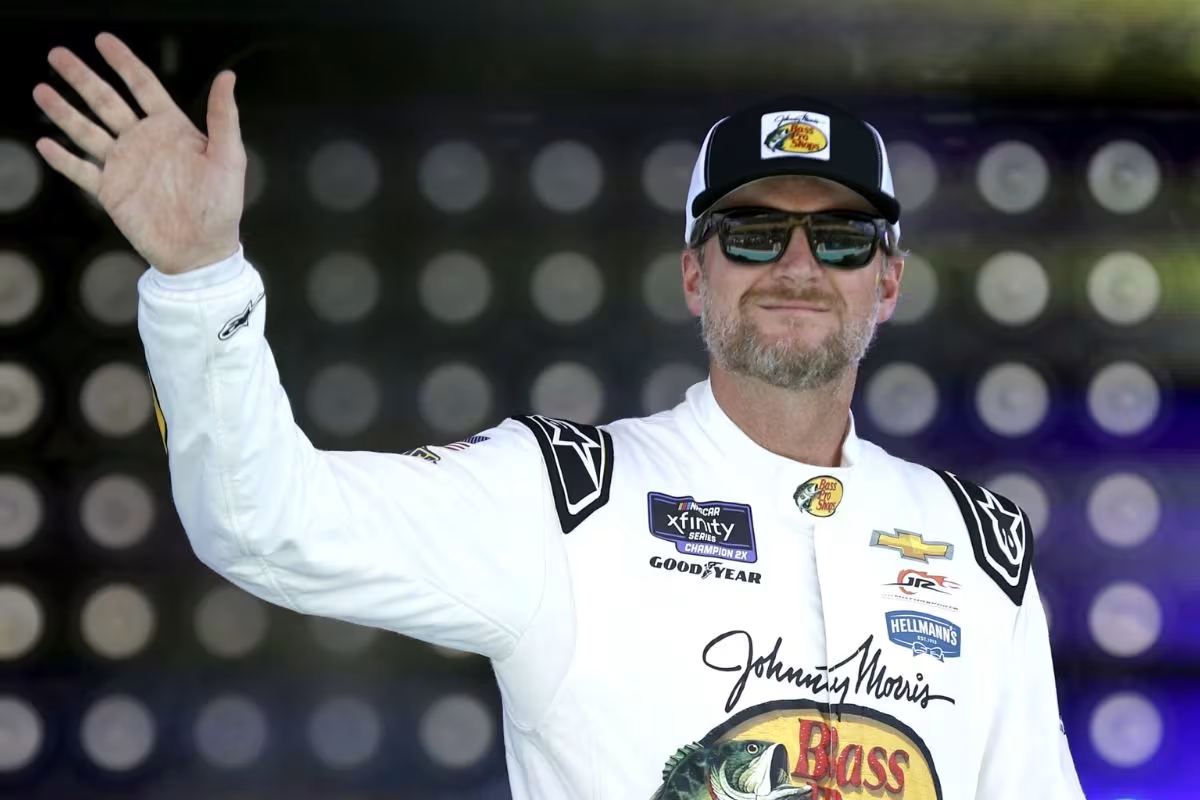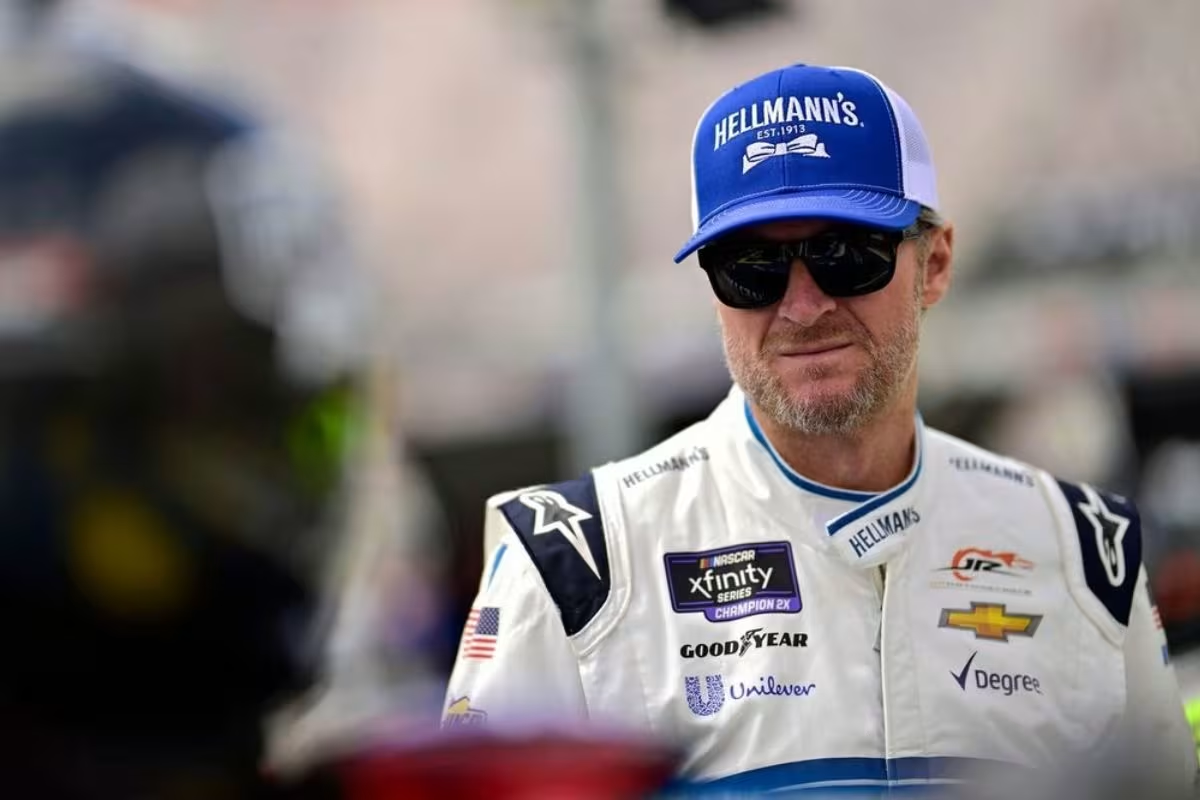How to Dominate Talladega Superspeedway: Understanding the details of Talladega Superspeedway requires more than just speed; it demands a planned approach that combines drafting, teamwork, and real-time decision-making. Dale Earnhardt Jr.‘s insights showing how to effectively navigate this tough environment, showing the importance of mental strength and adaptability. His experiences shows that success is not a product of raw talent but a climax of careful preparation and tactical expertise.
Key Highlights
- Master the art of drafting by forming with other drivers to enhance speed and reduce risks of multi-car incidents.
- Develop a dynamic in-race strategy, adjusting based on real-time feedback and analyzing past performance data for optimal outcomes.
- Prioritize fuel management and tire strategy to maintain a competitive edge throughout the race.
- Engage in experiential learning and situational drills to practice specific race challenges and improve critical thinking skills.
- Maintain effective communication within your team to foster collaboration and enhance decision-making under pressure.
Tackling Talladega: The Upcoming Challenge
As drivers gear up for the upcoming challenge at Talladega Superspeedway, the weight of the playoff implications looms large over their strategies and mental preparation. This 2.66-mile track is notorious for its high-speed drafting and near-constant three-wide racing, making it a trial for both skill and nerves. With points on the line, the stakes are heightened, requiring drivers to adopt a multifaceted approach that balances aggression with caution.
The unpredictable nature of superspeedway racing means that strategy must be dynamic. Drivers must assess their position within the playoff standings, weighing the need for stage points against the potential risks of aggressive moves.
Moreover, mental fortitude is key. The chaotic environment can lead to shows tensions, and maintaining composure is fundamental for making split-second decisions that could determine race outcomes. Experienced drivers like Dale Earnhardt Jr. have shown that mastering the art of patience and timing is as important as possessing raw speed.
Dale Earnhardt Jr’s Ongoing Influence
The enduring legacy of Dale Earnhardt Jr. continues to resonate deeply within the NASCAR community, showcasing the profound impact a seasoned veteran can have even after retirement. Since hanging up his firesuit in 2017, Dale Jr. has remained a big figure in the sport, providing invaluable insights and guidance to emerging racers moving the complexities of tough competitions like the Yellawood 400.
“They asked me to give some advice on drafting. We will put last year’s race on the TV and will watch the race. If I see if this shouldn’t have happened, or that…I’ll smash the pause button. I’ll say, you see that…I would have done xyz.”-(dale jr.)
His influence is particularly significant during a time when new drivers are keen for mentorship and tactical insight. Dale Jr.’s extensive experience allows him to communicate fundamental racing principles that can enhance a driver’s performance.
His ongoing contributions can be distilled into several key areas:
- Mentorship: Dale Jr. actively engages with younger drivers, offering advice based on his years of racing experience.
- Media Presence: His analysis and commentary on races provide fans and drivers alike with a deeper understanding of racing dynamics.
- Training Programs: Dale Jr. has developed unique training plans tailored to the needs of modern racers, equipping them with advanced skills and strategies.
- Community Engagement: Through diverse initiatives, he cultivates a sense of fellowship and shared knowledge within the NASCAR community, promoting the sport’s growth.
As Dale Jr. continues to shape the future of NASCAR, his legacy serves as a reminder of the importance of experience and knowledge in a sport where every moment counts.
His ongoing influence is a reflection of the power of mentorship and the lasting impact of a true racing icon.
Dale Jr’s Training Plan
Dale Earnhardt Jr.’s training plan for aspiring NASCAR drivers reflects a detailed approach to mastering the intricacies of racing at Talladega Superspeedway. Central to his methodology is a keen focus on the art of drafting, a skill that has evolved yet remains critical for success on this high-speed track.
By reviewing past races, Earnhardt provides a unique learning experience; he utilizes a video analysis technique where he pauses the footage to dissect pivotal moments. This hands-on engagement enables drivers to visualize the mechanics of racing dynamics, such as the significance of the “beach bubble” and side-drafting.
“The theory and the idea of how draft works is kind of universal…I can watch a race today and see a car do something and understand exactly why that happened…because the drafting, the beach bubble, the side-draft…are all still there…But it’s just one of those things that you gotta do it to learn it.”-(dale jr.)
Through this extensive training plan, he not only imparts theoretical knowledge but also nurtures an environment where aspiring drivers can actively engage with the material.
Moreover, the incorporation of real-time analysis cultivates critical thinking, allowing these drivers to develop a deeper understanding of the racecraft involved. By bridging the gap between theory and practice, Dale Earnhardt Jr. equips the next generation with the tools required to navigate the complexities of Talladega, ultimately steering them toward mastery of one of NASCAR’s most challenging venues.
Innovative Training Techniques
Building on the foundation laid by Dale Earnhardt Jr.’s extensive training plan, imaginative training techniques are increasingly shaping the preparation of aspiring NASCAR drivers.
These groundbreaking methods not only improve a driver’s skill set but also provide them with a competitive edge on the track. A notable example is Brad Keselowski’s spotter, TJ Majors, who has taken the traditional spotter role and evolved it into an advanced training strategy.
By recruiting sim racers to assist new talent like Carson Kvapil, Majors creates a dynamic training environment.
Here are four groundbreaking training techniques that are making waves in NASCAR preparation:
“What TJ does is very smart…He’s taken the spotter role to a whole new level. He recruited a handful of sim racers and he told them, ‘Y’all stay in line and run the bottom…Let Carson (Kvapil) try different things and see how side-drafting and all that (works)’…Then Carson and TJ can talk.”-(dale jr.)
- Simulated Racing: Utilizing racing simulators allows drivers to practice in a controlled setting, experimenting with different strategies and techniques without the physical risks of a live race.
- Spotter Collaboration: Engaging spotters in the training process enables drivers to receive real-time feedback on their maneuvers, cultivating a deeper understanding of race dynamics.
- Situational Drills: Conducting drills that mimic race conditions—such as side-drafting scenarios—allows drivers to practice responses to specific challenges they may face on race day.
- Data Analysis: Leveraging data from past races and simulations helps drivers identify performance trends, enabling them to refine their tactics and improve lap times.
Dale Jr’s 2015 Victory
While many drivers face challenges on race day, few have showcased resilience like Dale Earnhardt Jr. during the 2015 GEICO 500 at Talladega Superspeedway. This victory was not merely a demonstration of his driving skill but a masterclass in overcoming adversity.
Throughout the race, Earnhardt’s No. 88 Chevrolet covered with notable mechanical issues, including an overheating engine and a front grille clogged with debris. As he navigated through a field of 30 relentless competitors during the final 27 laps, the stakes escalated; speeds approached 200 mph, exacerbating the pressure.
Remarkably, despite the dire warnings flashing on his dashboard, Earnhardt maintained a steadfast focus. His ability to balance speed with tactical decision-making under such dire circumstances highlights a fundamental lesson for aspiring racers: resilience is as essential as raw talent.
Following his win, he expressed gratitude for his team’s hard work, emphasizing the synergy between driver and crew.
Everything is just so good for me now, my personal life, my racing, the team I am with. I don’t know why. I don’t feel like I deserve it. I’m, blessed, man. I’m blessed. We had a real strong car. I didn’t know if the engine was going to last. I had faith in it that it would because we build fast cars and they are tough. All those guys in the motor shop and the body shop, they earn their money today.”-(dale jr.)
Earnhardt’s 2015 win serves as an invaluable case study for contemporary drivers. His experience demonstrates that understanding how to tackle Talladega involves not just physical skill but also mental fortitude.
As today’s racers look to him for guidance, they must understand the core of perseverance and the importance of teamwork—key elements that can enhance a driver’s performance amid adversity.
News in Brief: How to Dominate Talladega Superspeedway
Talladega Superspeedway, drivers need a well-rounded strategy that includes tactical drafting, teamwork, and clear communication. Dale Earnhardt Jr. emphasizes the need to adapt to changing race conditions, as well as the importance of mental toughness and using data for training. By applying these expert strategies, drivers can enhance their performance and find success on this tough track. Ongoing learning and adaptability are essential for thriving in the tough environment of Talladega.
ALSO READ: Talladega Superspeedway New Logo: A Bold Tribute to Racing Legacy



